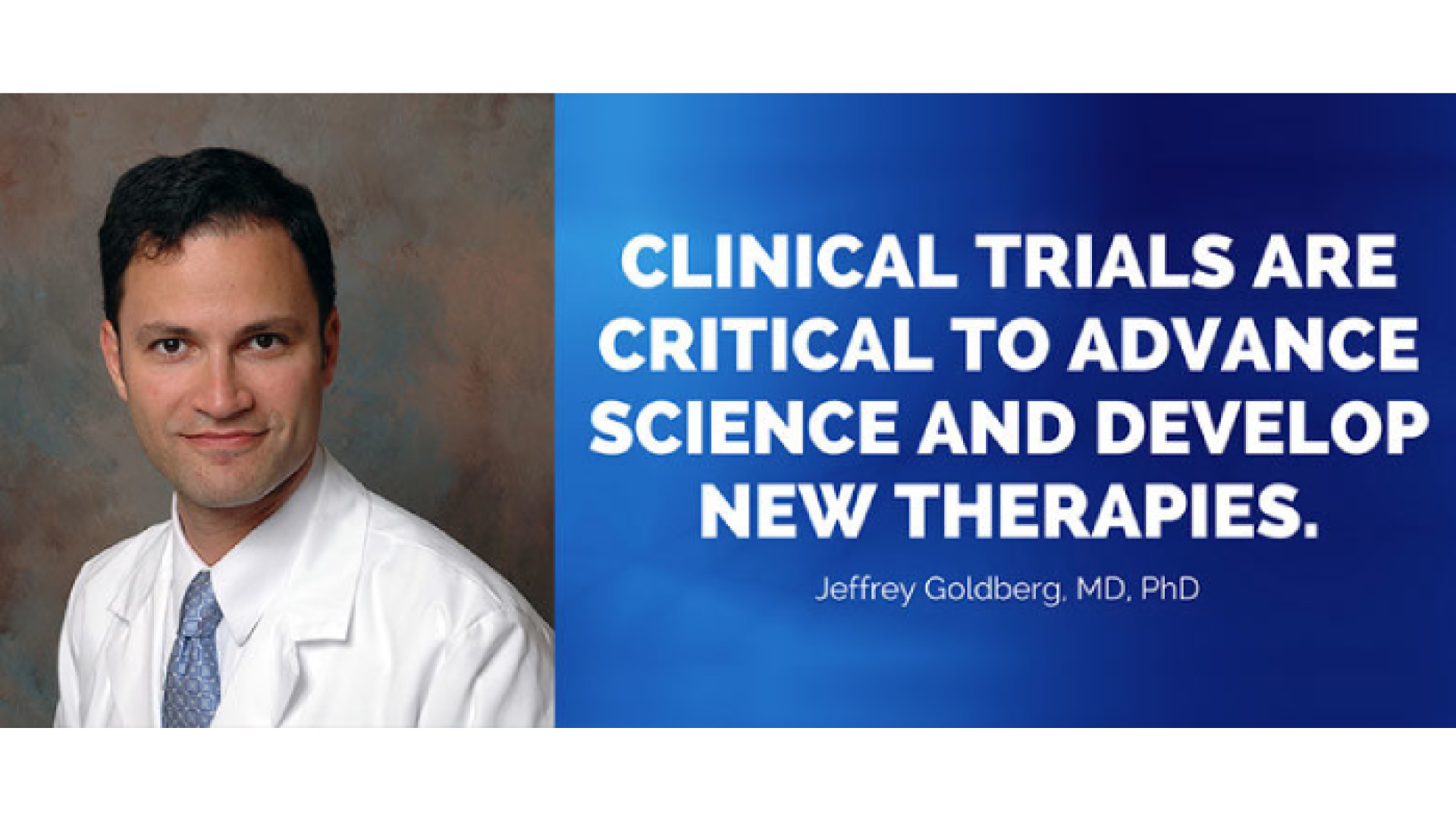Volunteers Helping to Save Sight in Stanford Clinical Trial
Written By: BrightFocus Editorial Staff
Written By: BrightFocus Editorial Staff

Volunteers in a Stanford University clinical trial – supported through National Glaucoma Research, a BrightFocus Foundation program – are helping evaluate the effectiveness of a capsule, implanted in the eye, with the potential to protect against damage to the optic nerve, and possibly enhance vision lost to glaucoma.
Directed by Jeffrey Goldberg, MD, PhD, chair of ophthalmology and director of the Byers Eye Institute at Stanford University, the clinical trial involves an experimental new treatment approach, consisting of a growth hormone produced by implanted cells that will stimulate optic nerve growth and activity. To achieve long-term effects, bioengineered cells contained in a tiny capsule, implanted into the eye, are designed to release a steady stream of growth hormone. Volunteers are followed for two years to see if this treatment provides neuroprotection and there is any change in vision.
BrightFocus: What does your clinical trial do?
Goldberg: We are testing new candidate therapies that we hope will directly act on the retinal ganglion cells and their fibers in the optic nerve, to protect or even restore vision in glaucoma. In one trial in progress, we are testing an implant that continuously secretes a survival and growth protein called ciliary neurotrophic factor (CNTF) into the eye. In a phase 1 trial it was found to be safe and showed some signals that it might bring a positive effect as well. We are now testing it in a phase 2 trial in glaucoma patients.
BrightFocus: Why are clinical trials important?
Goldberg: Clinical trials are critical to advance science and develop new therapies. In clinical trials, new candidate therapies with a track record of safety and efficacy in pre-clinical models of human disease can be appropriately tested in human patients. By applying appropriate clinical trial design under the oversight of ethics review boards, we can determine whether a new drug is safe and effective.
BrightFocus: What advice would you give to someone considering volunteering for a clinical trial?
Goldberg: Confirm with your doctor that the candidate therapy has been tested in appropriate pre-clinical (animal) models. Confirm that an institutional review board and, if appropriate, the FDA, have approved the trial. This will always be the case for clinical trials run out of academic centers, which often maintain the highest levels of ethics and oversight—get a second opinion if this is not the case. Inform yourself of the risks, and of the potential benefits associated with volunteering—there may be extra testing that will tell you more about your disease, and a chance to see if you’re able to respond to the drug.
BrightFocus: Is there a misperception that the public has about clinical trials that you would like to correct?
Goldberg: One misperception is that everything being labeled as a “clinical trial” is being subject to the same level of ethics oversight. For example, we published a paper about a very upsetting situation in which three patients were told they were participating in a clinical trial about stem cells for macular degeneration, and then were made to pay for “patient-funded research.” It turned out they were not enrolled in a trial, and they were blinded by the injections they received. “Patient-funded research” run out of clinics not associated with academic centers and/or lacking appropriate ethics (and FDA) oversight should arouse a high level of suspicion.
BrightFocus: Are you hopeful for the future of vision research?
Goldberg: Very! Decades of careful research and exciting breakthroughs in the laboratories have led to a number of excellent drug candidates that have the potential to protect or restore vision. Our work at the Mary M. and Sash A. Spencer Center for Vision Research at Stanford University is testing new therapeutics for vision restoration and applying cutting edge metabolic imaging and other biomarkers to give us a strong hope for success.
BrightFocus’s funding for our CNTF implant trial has been critical to moving this work forward and breaking the barrier for new drug testing for glaucoma, and looking at these next few years I couldn’t be more optimistic.
To learn more about how you may be able to participate in clinical research, please download the free BrightFocus publication, “Clinical Trials: Your Questions Answered,” or request a copy by calling 1-855-345-6237. This guide includes information on the important role of volunteers in science, as well as key questions to ask your doctor.
You can also search for research projects in your area that are seeking volunteers by visiting BrightFocus.org/GlaucomaClinicalTrials.
This is the latest in a series of articles promoting awareness of clinical trials that is supported in part by an educational sponsorship from Biogen. BrightFocus is solely responsible for the content of this article.
Search for Clinical Trials using Antidote:
This series of articles promoting awareness of clinical trials is supported in part by an educational sponsorship from Biogen. BrightFocus is solely responsible for the content of this article.
BrightFocus Foundation is a premier global nonprofit funder of research to defeat Alzheimer’s, macular degeneration, and glaucoma. Since its inception more than 50 years ago, BrightFocus and its flagship research programs—Alzheimer’s Disease Research, Macular Degeneration Research, and National Glaucoma Research—has awarded more than $300 million in research grants to scientists around the world, catalyzing thousands of scientific breakthroughs, life-enhancing treatments, and diagnostic tools. We also share the latest research findings, expert information, and resources to empower the millions impacted by these devastating diseases. Learn more at brightfocus.org.
Disclaimer: The information provided here is a public service of BrightFocus Foundation and is not intended to constitute medical advice. Please consult your physician for personalized medical, dietary, and/or exercise advice. Any medications or supplements should only be taken under medical supervision. BrightFocus Foundation does not endorse any medical products or therapies.
Support Groundbreaking Glaucoma Research
Your support helps fund critical research that could prevent vision loss, provide valuable information to the public, and cure this sight-stealing disease.
Donate Today